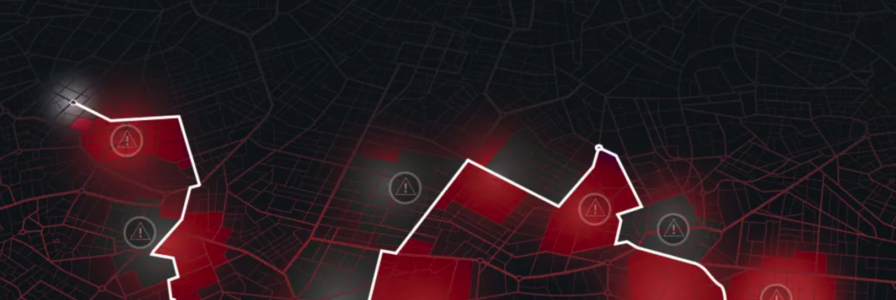The Risk Heat Map: A Powerful Tool for Risk Management

Effective risk management is critical for organizations navigating uncertainties in projects, operations, or strategic initiatives. A Risk Heat Map is a visual tool designed to help decision-makers quickly assess, prioritize, and respond to risks based on their likelihood and potential impact. This guide will explain what a Risk Heat Map is, how to create one, and how to use it effectively.
What Is a Risk Heat Map?
A Risk Heat Map is a graphical representation of risks, typically plotted on a two-dimensional grid. It evaluates two main dimensions:
- Likelihood: The probability of the risk occurring.
- Impact: The severity of the risk’s consequences if it does occur.
Each risk is placed on the map based on these two factors, allowing stakeholders to quickly identify high-priority risks that require immediate attention and lower-priority risks that can be monitored or tolerated.
Key Features of a Risk Heat Map
- Color-Coded Zones: Risks are often categorized into zones:
- Red Zone: High likelihood and high impact (critical risks).
- Yellow Zone: Medium likelihood or medium impact (moderate risks).
- Green Zone: Low likelihood and low impact (low-priority risks).
- Clarity: Visualizing risks in a single view provides a straightforward way to prioritize and communicate risk levels.
- Action-Oriented Insights: The map helps organizations allocate resources and develop mitigation strategies efficiently.
Steps to Create a Risk Heat Map
1. Identify Risks
Begin by brainstorming and identifying potential risks in your project, process, or organization.
Examples of Risks:
- Financial risks (e.g., budget overruns).
- Operational risks (e.g., supply chain disruptions).
- Technological risks (e.g., data breaches).
- Regulatory risks (e.g., non-compliance).
2. Assess Likelihood and Impact
For each identified risk, evaluate:
- Likelihood: Assign a probability rating (e.g., on a scale of 1–5).
- Impact: Determine the severity of the potential consequences (e.g., on a scale of 1–5).
Example:
- Risk: Cybersecurity breach.
- Likelihood: 4 (likely).
- Impact: 5 (severe consequences).
3. Plot Risks on the Heat Map
Place each risk on a grid where:
- The x-axis represents the Likelihood (low to high).
- The y-axis represents the Impact (low to high).
For example:
- A cybersecurity breach might fall in the top-right quadrant (high likelihood, high impact).
- A minor PR issue might fall in the bottom-left quadrant (low likelihood, low impact).
4. Apply Color Coding
Use a color scheme to emphasize urgency:
- Red: Critical risks requiring immediate mitigation.
- Yellow: Moderate risks needing attention but not urgent.
- Green: Minor risks that can be tolerated or monitored.
5. Develop Mitigation Strategies
For each risk, outline specific actions to reduce likelihood, mitigate impact, or both.
Example Mitigation Plans:
- High Risk: Implement robust cybersecurity measures and train staff.
- Medium Risk: Develop contingency plans and monitor risk triggers.
- Low Risk: Document and review periodically.
Practical Example of a Risk Heat Map
| Impact → | Low | Medium | High |
|---|---|---|---|
| Likelihood ↓ | |||
| Low | Routine equipment wear | Minor vendor delays | Rare PR incident |
| Medium | IT service interruptions | Staff turnover | Customer complaints |
| High | Delayed product launch | Data breach | Major regulatory fines |
Using the Risk Heat Map Effectively
1. Prioritize Risks
Focus resources on addressing high-likelihood, high-impact risks in the red zone. Delegate monitoring of low-priority risks to automated systems or periodic reviews.
2. Facilitate Communication
Use the heat map as a communication tool to share risk insights with stakeholders and align teams on mitigation priorities.
3. Monitor and Update Regularly
Risks evolve over time. Regularly update your heat map to reflect new risks or changes in likelihood and impact.
Example:
A company may revise its heat map during quarterly reviews or after significant changes in market conditions.
Benefits of Using a Risk Heat Map
- Enhanced Decision-Making: Provides a clear framework for identifying and addressing the most critical risks.
- Efficient Resource Allocation: Directs efforts where they are needed most, avoiding wasted time or over-preparation for minor risks.
- Improved Communication: Simplifies complex risk assessments into an easily understandable format for all stakeholders.
- Proactive Risk Management: Helps organizations anticipate and prepare for potential disruptions, reducing reactionary firefighting.
Limitations to Consider
- Subjectivity: Scoring likelihood and impact can be subjective without clear criteria. Standardizing scales and involving diverse perspectives can help.
- Complex Risks: Some risks may span multiple areas, making it difficult to assign them a single position on the map.
- Over-Reliance: A heat map is a tool, not a solution. It must be supplemented with actionable plans and regular updates.
Conclusion
The Risk Heat Map is a versatile tool that simplifies the complex process of risk management. By helping teams visualize and prioritize risks, it empowers organizations to focus their resources strategically and act proactively. Whether you’re managing a project, running a business, or planning for the future, incorporating a Risk Heat Map into your risk management practices can provide clarity, drive better decisions, and ultimately safeguard your success.







